About Knee Pain Treatment
The knee is a complex joint made up of multiple tissue types, and knee pain can arise from a variety of causes. In many cases, knee pain originates from issues not directly related to the knee, such as inefficient gait mechanics, poor posture, muscle weakness, obesity, metabolic disease and other factors.
Conventional medicine takes a reductionist approach to knee treatment, addressing pain symptoms with drugs and surgery while ignoring other factors that actually cause knee pain. In the vast majority of cases, patients can avoid drugs and surgery with holistic treatment from an experienced knee pain specialist.
Dr.Kalika has revolutionized knee rehabilitation by introducing high resolution diagnostic ultrasonography for structural diagnosis, combined with gait and motion analysis technology to visualize and objectify the functional movement of the knees and lower extremities. Dr. Kalika is a recognized expert in diagnostic musculoskeletal ultrasonography, with multiple research publications to his credit.
Our orthobiologic specialist, Dr. Uri Brozgol, is a neurologist with 20+ years of experience in treating pediatric and adult myofascial pain. As new research on the critical role of fascia began to emerge, Dr. Brozgol became interested in orthobiologic injection therapy and fascial release techniques, and he began treating myofascial and nerve problems with orthobiologic solutions.
Dr. Brozgol’s expertise lends precision to ultrasound-guided needling procedures, including:
Our top-grade high-resolution ultrasound enables us to dynamically visualize the body’s structures in real time, equipping us with an invaluable diagnostic tool, along with superior capabilities for delivering regenerative and orthobiologic procedures with accuracy and precision.
The motion and gait analysis lab at NYDNRehab is the only private lab in the US to feature research-grade technology, normally found only at top research universities. We use our advanced technologies to provide our patients with the very best diagnostic and treatment options in Manhattan, NYC.
Together, Dr. Kalika and Dr. Brozgol are revolutionizing the way myofascial pain is diagnosed and treated. Dr. Kalika’s successful track record of rehabilitating musculoskeletal injuries combined with Dr. Brozgol’s expertise in treating myofascial pain makes NYDNRehab the clinic of choice for myofascial pain in NYC.

Orthobiologic specialist
Diagnostic ultrasound enables us to identify the structural causes of knee pain in real time, with the knee in motion. Ultrasound also lets us measure and compare characteristics between the injured and non-injured knee, and equips us with sonoelastography, to test the elastic properties of tendons and identify degenerating tissues.
We use sophisticated 3D gait analysis technology to identify sub-optimal gait mechanics that contribute to knee pain. Our high-tech motion and gait analysis lab features some of the most advanced technologies available for quantifying knee mechanics. Systems like ForceFrame and Kineo Intelligent Load provide technologies for objectively and accurately measuring knee strength and range of motion.



Identifying and treating underlying issues prior to beginning physical therapy is key to getting fast and effective results. Failure to pre-treat your condition can completely undermine your treatment protocol, and in some cases, your condition may even worsen.
Obstacles to physical therapy success include:
At NYDNRehab, we use a broad range of regenerative technologies and integrative therapeutic approaches to resolve issues that can stand in the way of successful physical therapy. Our staff is certified in a diverse array of holistic treatment methodologies, and our one-on-one treatment sessions are personalized, based on your unique patient profile.
Once we pre-treat your damaged tissues and eliminate compensation patterns, your body will be ready to begin physical therapy.
Medical doctors often treat knee pain with pain medications, anti-inflammatory drugs and steroid injections, all of which provide temporary relief, but fail to eliminate the cause of knee pain. In fact, excessive use of steroids and drugs can create more serious health problems. When symptoms persist, conventional imaging modalities like MRI may be used to look for mechanical issues, but MRI is unable to visualize neurological factors that contribute to knee pain symptoms.
At NYDNRehab, we use high-resolution ultrasonography and other diagnostic technologies to precisely identify the underlying cause of knee pain.

Regenerative therapies tap into the body’s own healing mechanisms by using electro-hydraulic, radiofrequency, electromagnetic, and sound waves to stimulate tissue repair and regeneration at the cellular level.
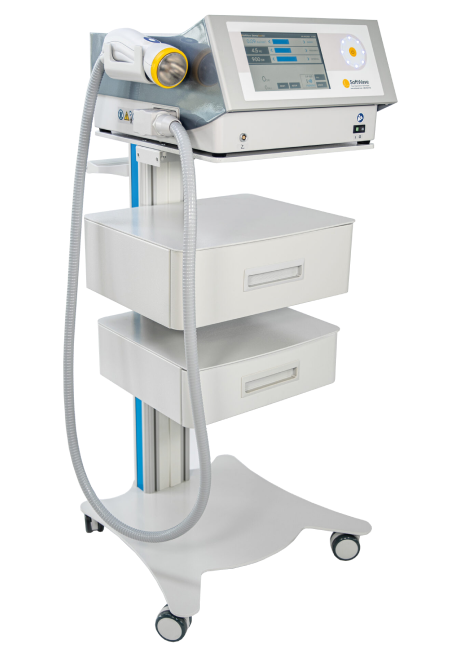
SoftWave’s defocused and linear focused shockwaves use mechanotransduction technology to recruit stem cells to the treatment site to promote healing. SoftWave is the most effective unfocused shockwave technology currently available. According to recent research, SoftWave defocused waves combined with focused and radial shockwaves have maximum regenerative potential.
MyACT focused shockwave technology allows for deeper compression of focused waves, for precise neuro modulation under ultrasound guidance. MyACT transforms the mechanical energy of shockwaves into biochemical signals that precisely target damaged tissues.
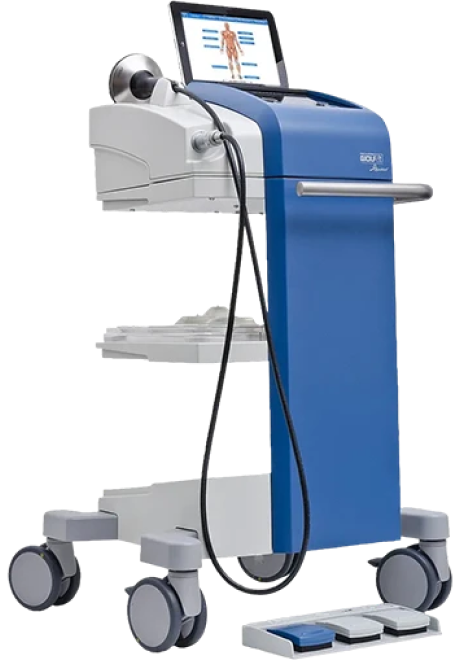

Focused ESWT is a regenerative treatment for damaged tendon, muscle and bone tissue. This technology is especially effective for chronic degenerative tendon disorders and myofascial pain syndrome.
EMTT transmits high energy magnetic pulses to targeted tissues that synchronize with the body’s own magnetic fields, triggering a regenerative response.
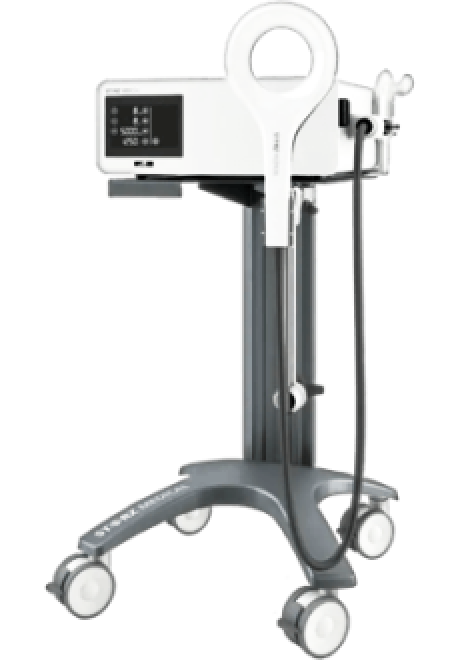
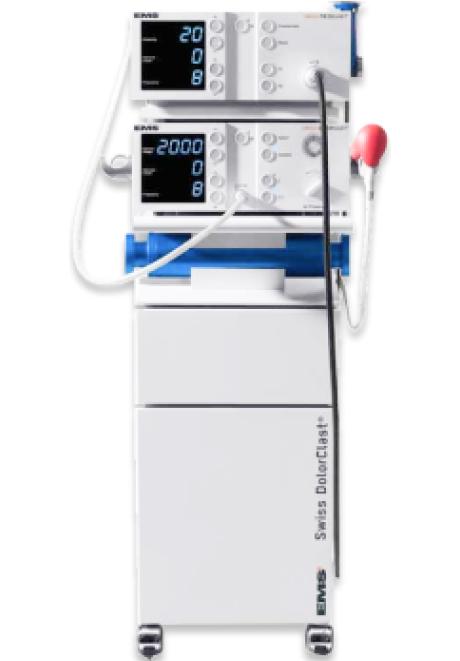
EPAT uses mechanical pressure waves to enhance blood circulation, improving oxygen and nutrient delivery to injured muscle and fascia tissues.
HEIT delivers high-intensity magnetic pulses to peripheral nerve tissues, to stimulate neuroplasticity.
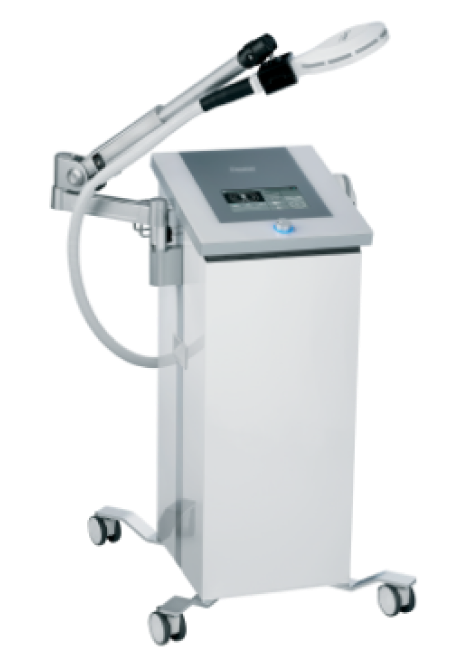
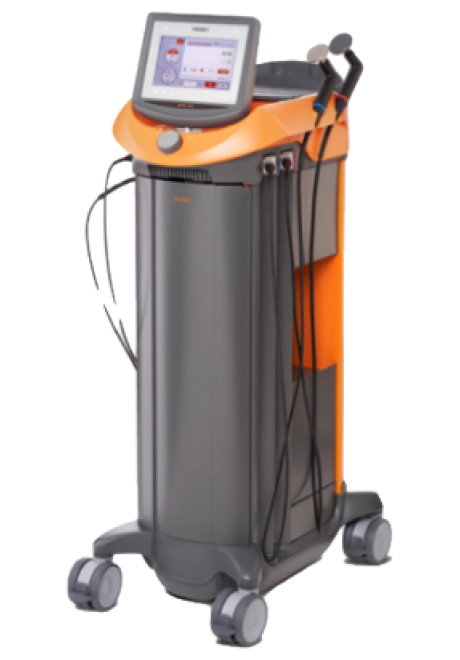
INDIBA is a form of TECAR therapy that helps to restore the ionic charge of damaged cells, for faster injury healing and rehabilitation.
NESA generates a low-frequency electrical current that soothes hypersensitized nerves and restores optimal signaling between the autonomic nervous system and the brain, to enhance motor control.
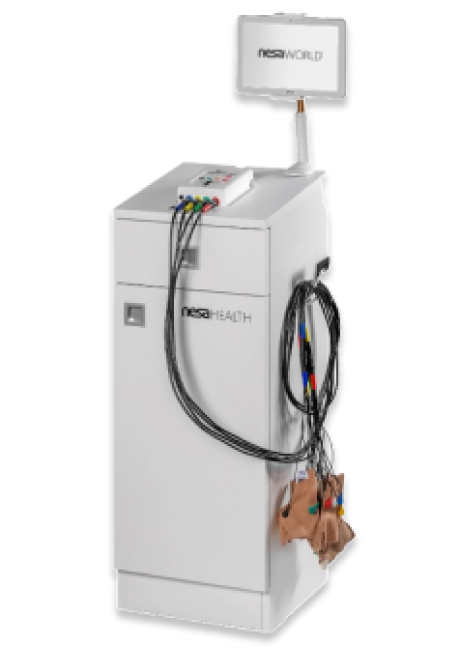

PRP therapy spins a sample of the patient’s own whole blood in a centrifuge to extract a high concentration of platelets. When injected into damaged tissues, PRP initiates tissue repair by releasing biologically active factors such as growth factors, cytokines, lysosomes and adhesion proteins, to stimulate the synthesis of new connective tissues and blood vessels.
Alpha 2 macroglobulin (A2M) is a naturally occurring blood plasma protein that acts as a carrier for numerous proteins and growth factors. As a protease inhibitor, A2M reduces inflammation in arthritic joints and helps to deactivate a variety of proteinases that contribute to cartilage degradation.
Prolotherapy uses a biologically neutral solution to irritate stubborn tissues, triggering the body’s innate healing mechanisms to grow new normal tendon, ligament and muscle fibers.
During the hydrodissection procedure, a saline solution is injected into densified fascia under ultrasound guidance. The solution works by separating fascial layers and freeing up entrapped nerves and blood vessels. We often use hydrodissection in conjunction with manual fascial manipulation.

SM neuromuscular electrical stimulation (NMES) dynamically interacts with the patient during therapeutic exercises, providing real-time sensory, auditory and visual biofeedback to the patient. This breakthrough technology helps patients to recalibrate muscle actions, to optimize joint function. SMNMES has helped numerous patients to avoid unnecessary shoulder, knee and ankle surgeries, even in complex scenarios.
During PENS treatment, filament-thin needles are inserted through the skin into muscle tissue adjacent to the targeted nerve. A low frequency electrical current is then delivered via the inserted needles to stimulate the dysfunctional nerve. PENS normalizes nerve activity, improves brain plasticity and optimizes muscle recruitment patterns. This therapy is so effective that patients typically need only 4-6 treatment sessions.
BFR makes it possible to rehabilitate injured tissues using much lighter training loads, by occluding the blood vessels to elicit a regenerative response in damaged cells. BFR helps prevent tissue atrophy after an injury while protecting damaged structures from overload. It speeds the recovery process for faster return to pain-free activity.
Myofascial release techniques help to eliminate fascial adhesions, release entrapped nerves and blood vessels, and restore the elastic and gliding properties of densified fascia.
Physical therapy restores functional mobility after tissues have been treated, repaired and healed. We custom-design our physical therapy to meet the needs of the individual patient, from older adults who need post-surgery rehab, to elite athletes who want to return to sports at high performance levels.
With 20+ years of experience working with athletes and physically active New Yorkers, Dr. Kalika’s expertise in treating knee conditions has helped hundreds of patients to return to physical activity at pre-injury performance levels. Over the past decade, rehabilitative medicine has taken a quantum leap forward, and Dr. Kalika has remained on the cutting edge of research and adoption.
The knee joint is particularly responsive to orthobiologic and regenerative interventions, and we boast a 90% success rate in treating the most difficult patellofemoral pain conditions, using a combination of orthobiologics, energy technologies, and high-quality physical therapy.
Our advanced approach to knee rehab combines:
In cases of anterior cruciate ligament reconstruction (ACLR), the use of ESWT immediately post-surgery accelerates recovery with reduced inflammation, quick restoration of quadriceps strength, faster transition to late-stage rehab, improved functional outcomes, and reduced risk of developing knee osteoarthritis.
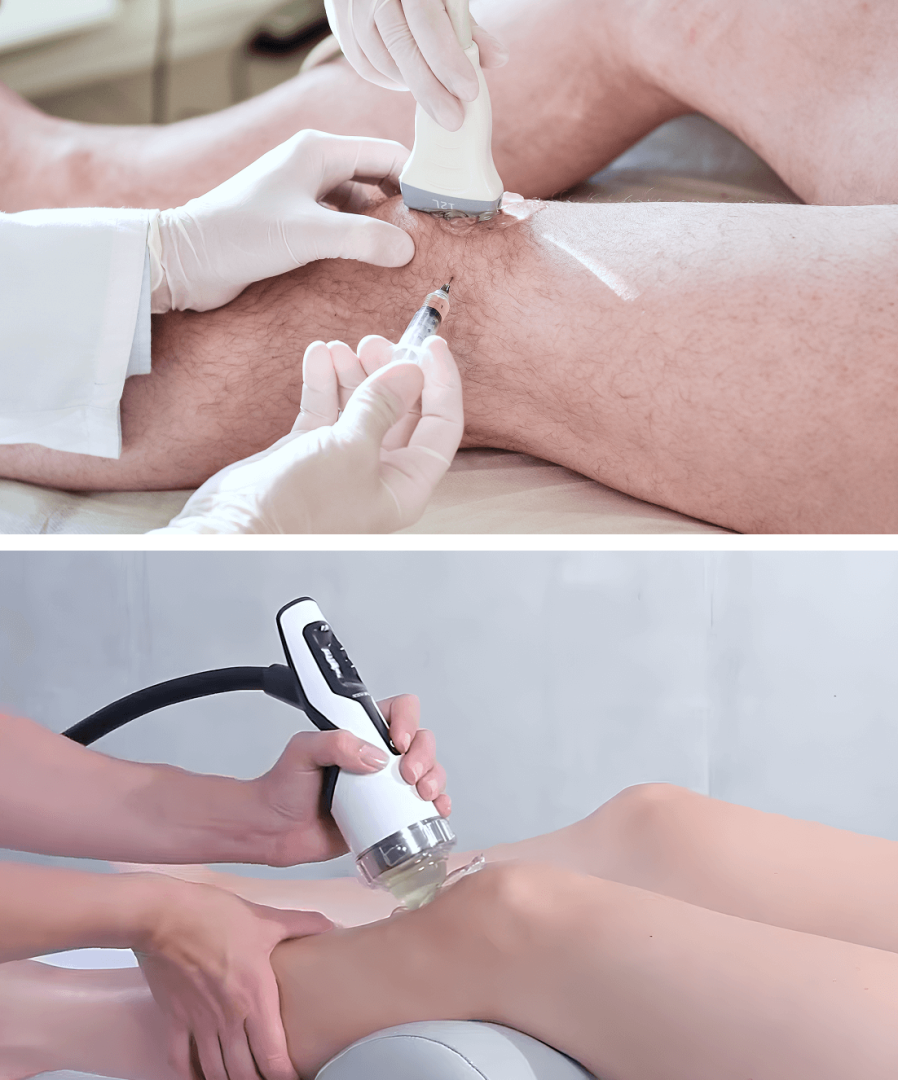
Patella-Femoral Pain Syndrome (Runner’s Knee)
Frontal Knee Pain
Knee Bursitis
Inner Knee Pain
ACL/PCL Tears (Pre-, Post- and Non-Surgical)
Failed Knee Surgery
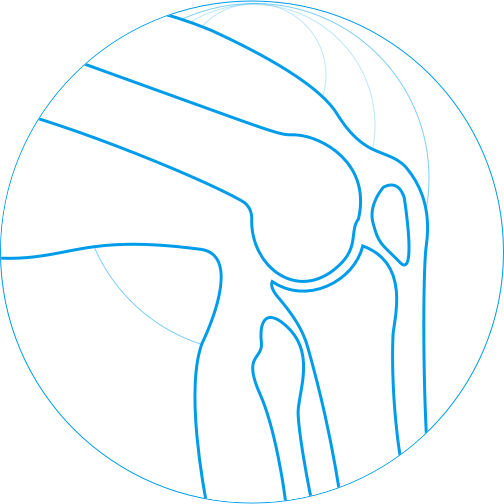
Meniscus Tears (Post- and Non-Surgical)
MCL Tears (Post- and Non-Surgical)
Pes Anserine Bursitis / Tendinopathy
Medial Retinaculum Pain Syndrome
Plica Syndrome
Runners Knee
Jumper’s Knee